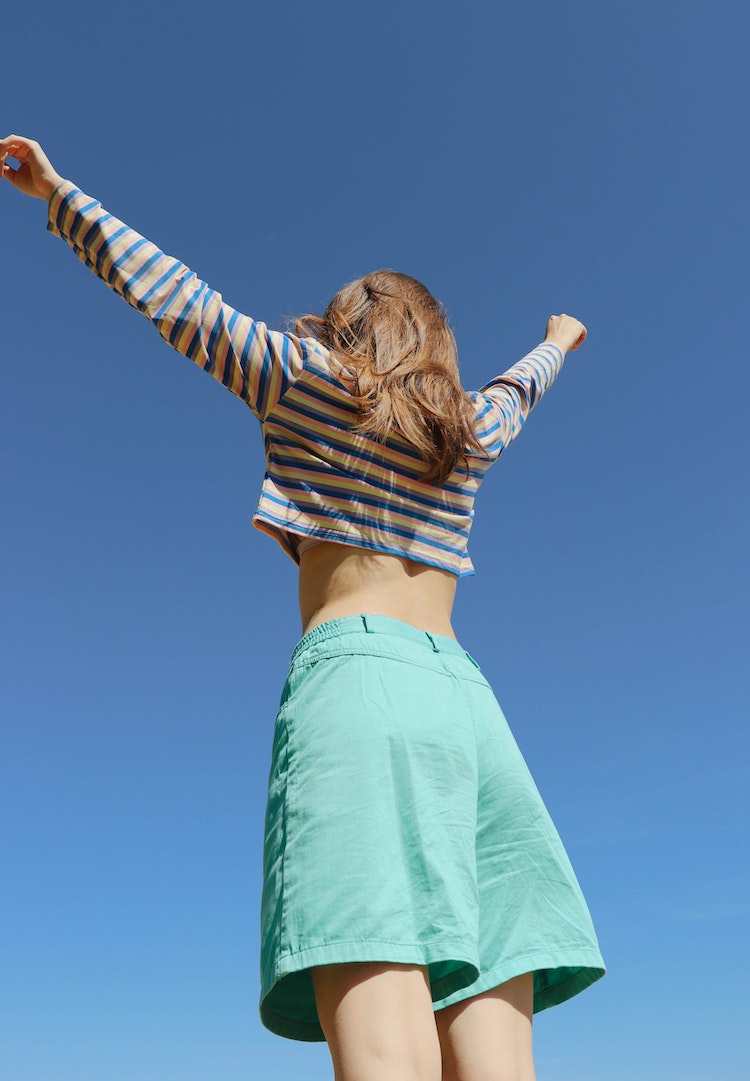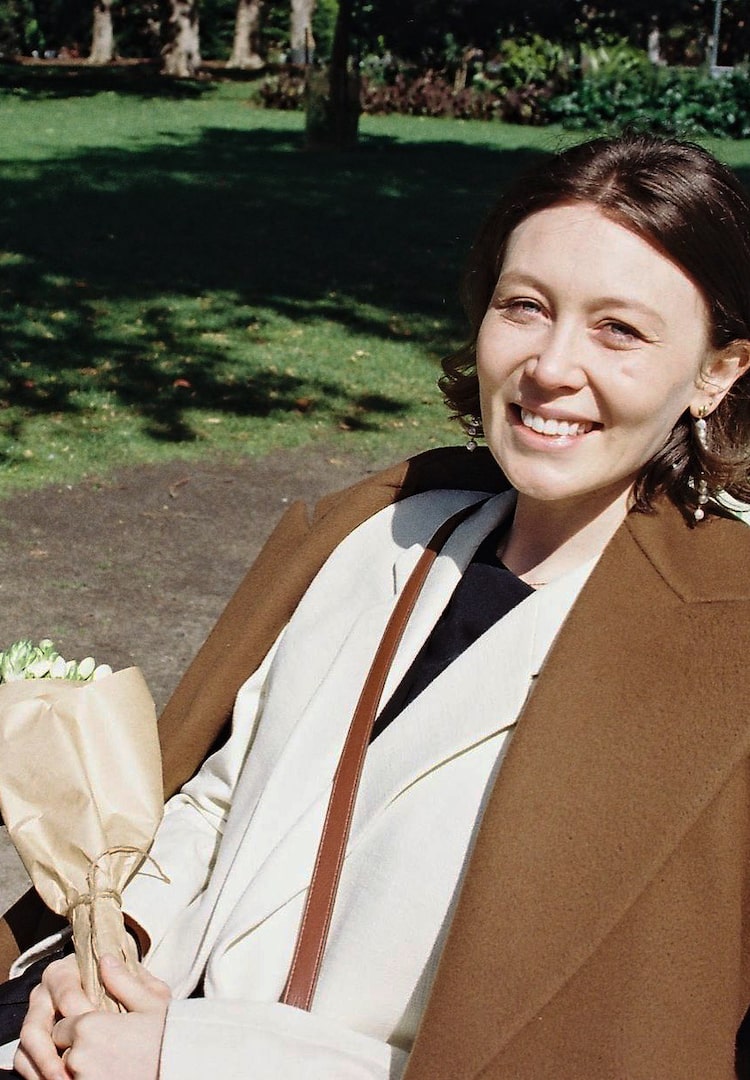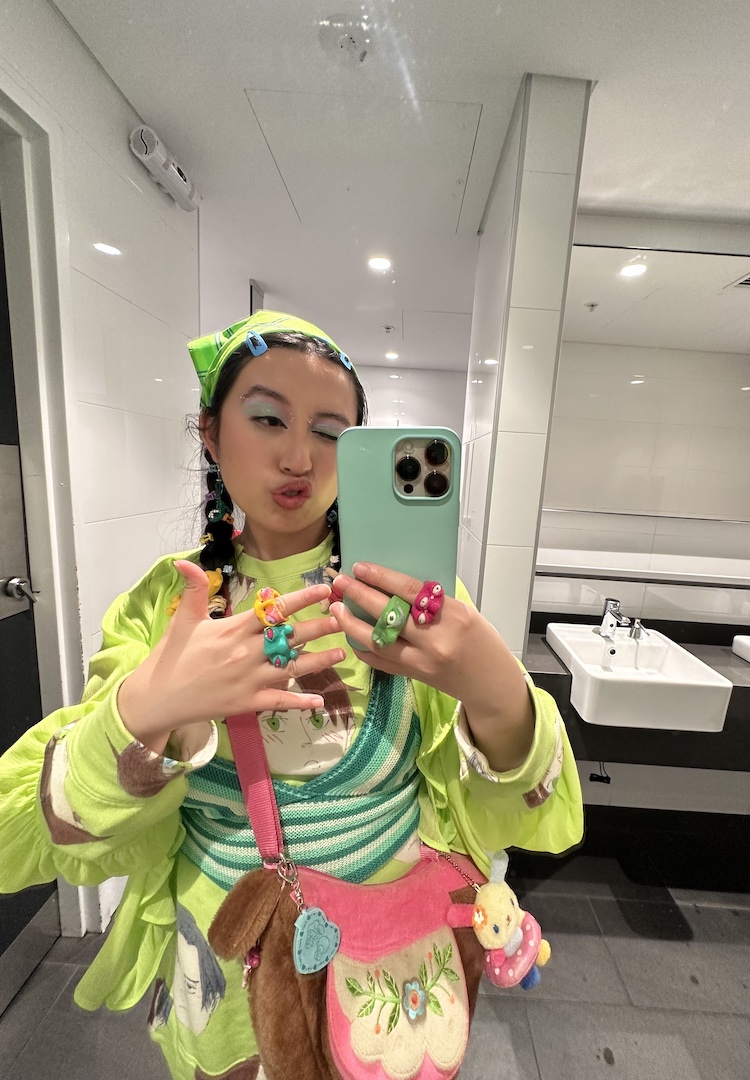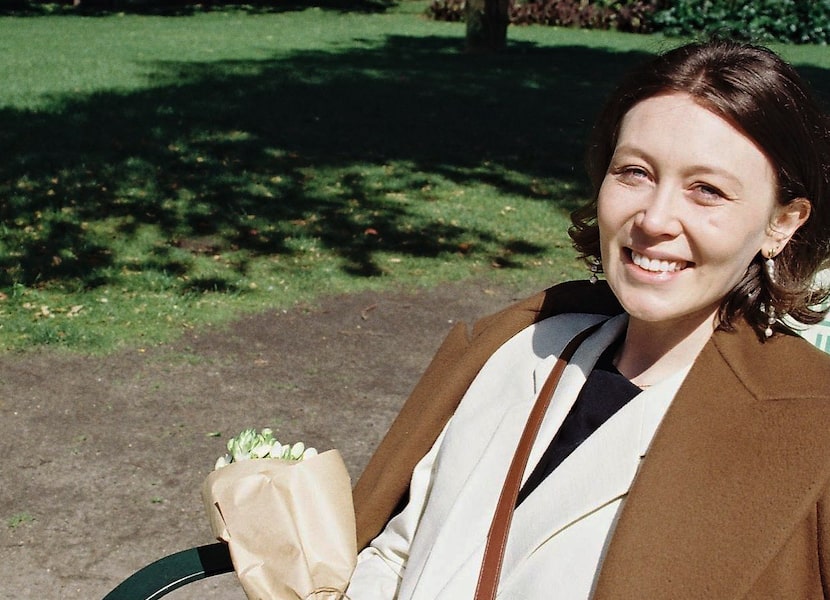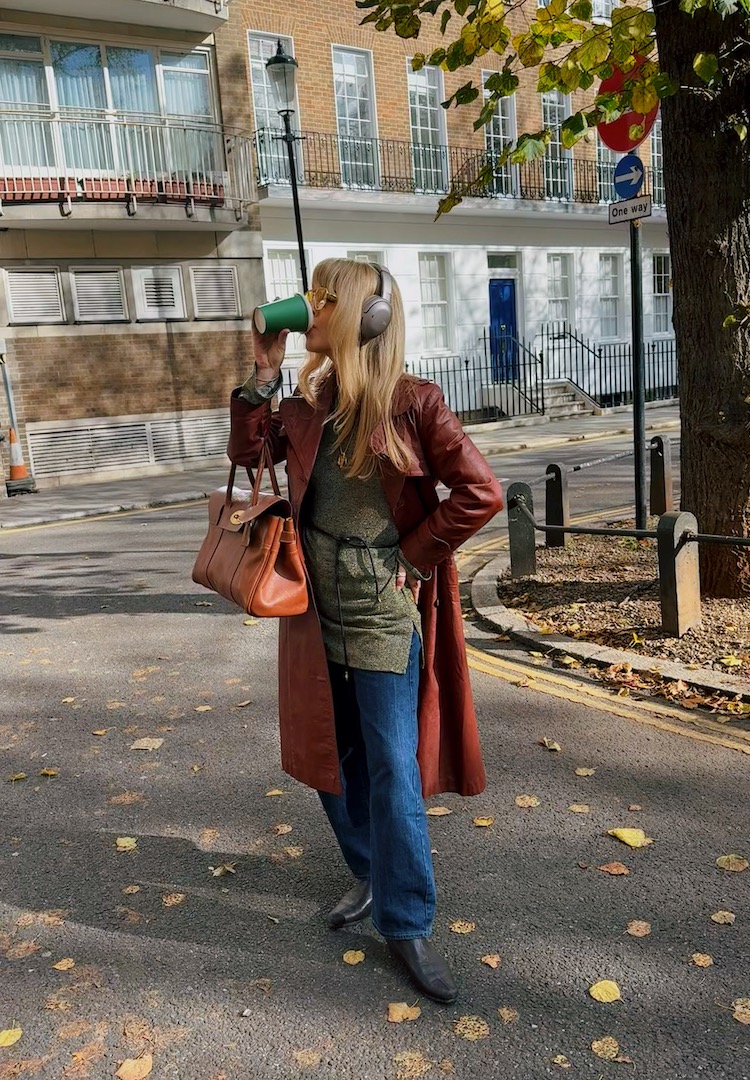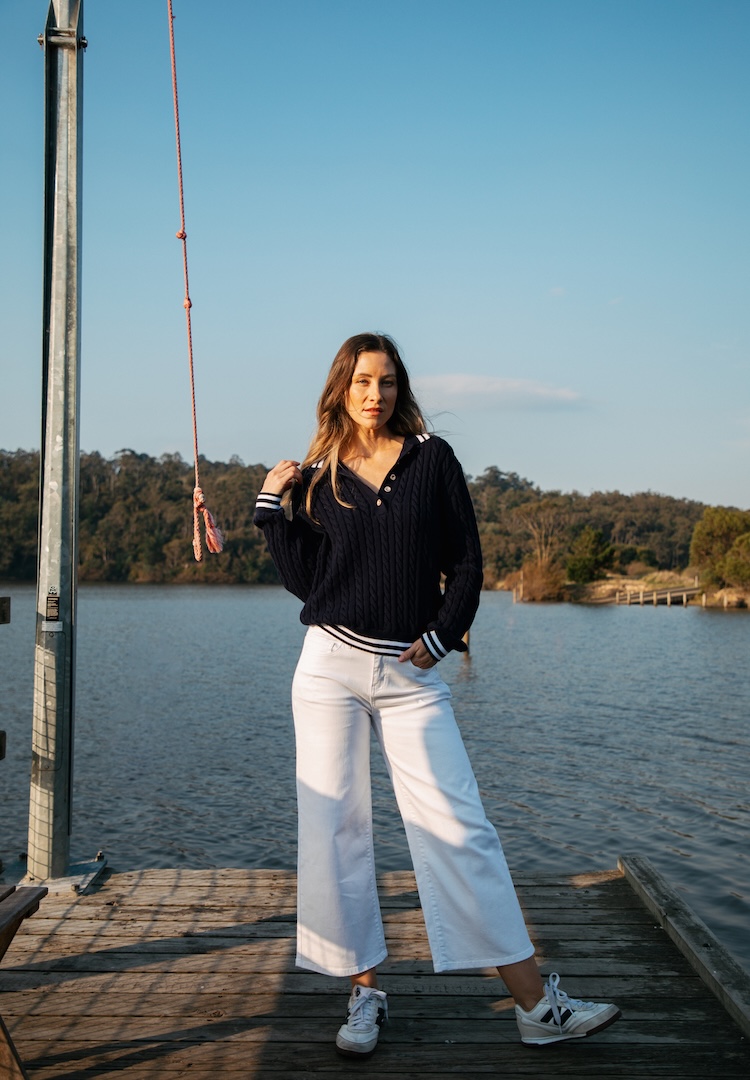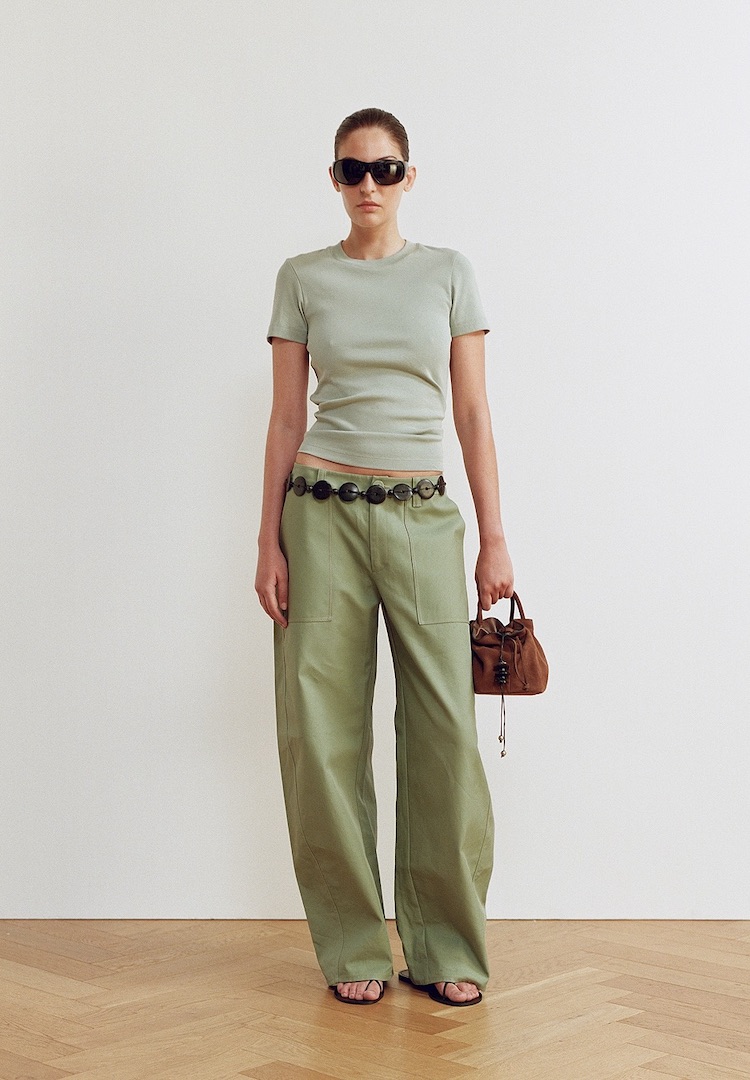3 fashion creatives on building your forever wardrobe
IMAGE VIA @CHLOEJNAUGHTON/INSTAGRAM
WORDS BY ISABELLA WIGHT
Wear a little longer.
Being the jaded teenager I was, making fun of my parents was an integral part of my angsty routine. I look back and feel horrible for the incessant door-slamming and life-ruining proclamations, but there was zero remorse for 17-year-old me. She held no prisoners.
I was also one of those kids who was lucky enough to travel a lot, specifically the 18-hour direct flight between Brisbane and Dallas. As a Texan woman living in Queensland, my mum’s a flying veteran – she can sleep anywhere, never forgets her pashmina (‘It’s a blanket, pillow and scarf, Izzy’) and has packing down to an origami-style artform.
Learn more about sustainability in our Fashion section.
For a month-long stay, she brought a sleek red overnighter containing minimal items from her ‘essential capsule wardrobe’. I teased her about outfit repeating while trying to sweatily lug my 20 kgs of clothing through the airport, only to come back with more (you just can’t get diamante Uggs like that in Australia). How much of this did I wear, you ask? Roughly four of the 12 outfits I insisted I take with me.
For a long time, the same principle applied to my general wardrobe. Stuff it full – stylish people always have giant wardrobes – wear the new items, hoard the rest. For years and well into my fashion degree, I thought being stylish was synonymous with constantly buying new clothing, leading to over-consumption and, eventually, landfill contribution.
Quite frankly, I got tired of the cycle of throwing out and rebuying the same pieces because mine kept breaking. Suddenly, my mum’s curated capsule wardrobe didn’t seem so daggy. I started rifling through her closet for ‘vintage gems’, always beautifully preserved, repaired and cherished from her younger years. I wanted that.
If conscious purchasing and capsule wardrobes are wrong, I don’t want to be right. Sustainable fashion is a huge topic that can feel pretty daunting to broach, but recontextualising it from the angle of buying less and wearing longer makes so much sense.
I’ll admit – this isn’t an original thought (do those even exist anymore?). I was inspired by Levi’s Buy Better, Wear Longer campaign – primarily because the one item we can all agree on is the perfect pair of jeans. In case you need more convincing, I talked to some very cool, very knowledgeable people who probably never bought diamante Uggs.
Clare Press, sustainability expert and founder of ‘Wardrobe Crisis’
View this post on Instagram
As a fashion lover, what’s the thought process that goes into your purchase decision?
Honestly, it’s thinking before you buy. I’m a lifelong fashion lover – I haven’t given that up – but I’ve taken up mindful shopping. I confess that before I started this journey, I wasn’t even close to being a mindful shopper. I’ve never been a great thrower-away, more of a hoarder.
These days I’m much more conscious about why I’m buying something and how I’m selecting that item – I look into the sustainability credentials now when I make a purchase, I’m pretty tapped into that, which you’d expect because that’s what I do for a job [laughs]. If you were to ask what I recommend other people do, I’d say you have to ask questions… as soon as you start doing that, it kicks in to start the process of being more mindful.
It’s empowering to be more connected with our purchase decisions and it’s also inspiring – I’d rather feel like I had made an effort to understand what I was buying than be a passive consumer who had been sold something without considering what I was participating in.
If you’re an active participant and an active fashion citizen, thinking through how you choose what you’re going to buy, you’re way more connected to that. When we think about the line ‘buy better, wear longer’, you’re much more likely to do that ‘wear longer’ part when you start with being connected and being mindful around what you’re choosing to purchase. It sounds so obvious, but we’ve lost that.
Growing up, I always used to make fun of my mum for her capsule wardrobe.
I love the capsule wardrobe!
I love it now too and I feel bad! I thought that being a fashionable person meant buying things that were trendy all the time. Her capsule wardrobe served its purpose to such an amazing degree.
And you just said a great thing there, purpose. Why do we need these things? What purpose do they serve? [The] purpose could be that it makes you happy and it looks great. That’s purpose. Every piece has to serve a purpose. The statistic that didn’t surprise me was that about a third of Australians own between 50 to 150 pieces of clothing and half of them are going unworn… that’s kind of what we’re seeing internationally as well.
What did surprise me was that more than half of Australians (56.8 per cent) agree that compared to 10 years ago, our clothes don’t last as long. You’d think that the answer would be to invest in better clothing, but nearly one in two Australians agree that they will still purchase this clothing that’s cheaper and has a shorter lifespan.
What would you say to someone who is trying to make their wardrobe more sustainable?
I mean, honestly, it comes down to connecting with your wardrobe. If you don’t know what’s in it and you don’t know there’s a problem, you’re not going to change. And the problem is collective, it’s not just your problem… as a society, we’re buying clothes and throwing them away at a faster rate than ever before.
If you had one piece of homework, let’s make it that you challenge yourself to wear what you love for longer. You could just say [to yourself] ‘I love this thing. I tore it or it’s a bit worn out, I was going to chuck it, but I’ll get it repaired’.
Paul Dillinger, VP and Head of Global Innovation for Levi’s
View this post on Instagram
Was there a catalyst for the Levi’s Buy Better, Wear Longer campaign?
You know that the sustainability conversations are so robust, so full-throated and everyone’s participating internally. But externally, our goal has always been to keep our brand’s conversation at the centre of culture.
We don’t do sustainability because the consumer wants it. If we did sustainability because the consumer wanted it, that would give us an excuse to not do sustainability when a consumer doesn’t want it. And that’s not an option, we must always be good stewards of the earth and natural resources.
So what we’ve tried to do is bring this conversation to the centre of [our] culture and align our marketing with the values that we know we practice internally… we wanted to craft a message that was friendly, that was conversational, that met people where they were with voices they recognised.
What does it take to make a classic?
This is a little esoteric, but it’s about our identity and our self-confidence and not thinking that we need to go out and you know, buy a new identity for a party on Saturday night and throw it away on Sunday. I’ve been hoping that the pandemic and the time that people have spent isolated, thoughtful and surrounded by all the bad decisions they shouldn’t have bought in the first place – it would give them time to reset.
And I think when we do that and when we have a bit more knowledge about the impact of our consumption, a little more of a sense of self, once we’ve trained ourselves not to find our sense of worth in some ephemeral fast fashion… then I think we’ll get a change going.
Levi’s are always going to make your butt look good. That’s the thing. And then similarly, if you’re ever in a position of reselling, or if you’re shopping secondhand, you know Levi’s are always valuable.
And that’s not the product of one campaign, it’s not one component, one new fibre, but it’s hundreds of little decisions that were codified… remade every season by a set of designers who are tasked themselves to be engineers of value, rather than just engineers of a false appetite and unnecessary change.
Chloe Naughton, fashion consultant
View this post on Instagram
What factors determine your fashion purchasing decisions?
Fashion for me is almost like art. You can’t buy art all the time. It’s expensive and it’s hard to find beautiful pieces that you love. You have to wait until you see a piece of art that stops you in your tracks and you think ‘Wow, that’s beautiful’.
I feel like fashion [for me] is similar. I’d rather wait and buy a new piece when it stops me in my tracks. Esse, who is a Sydney-based label, does this a lot for me. [The designer] Charlotte makes incredible seasonless pieces. This approach means I like to invest in a few considered things, rather than splash out on many cheaper things. So naturally, this requires me to be more selective.
How do you curate a wardrobe that lasts?
It takes time. If you’ve decided to build a lasting wardrobe and you’re at the beginning, be ready to take the slow lane. Building a lasting wardrobe and collecting seasonless, trendless pieces that you can envision yourself wearing in two, five and ten years takes time, patience and being very selective with which new pieces you bring into the delicate ecosystem that is your wardrobe.
It also requires you to have a strong sense of your personal style so you can start collecting pieces that work for you. Not necessarily on-trend pieces. You will always look better buying for your body shape, rather than what’s in fashion that season.
You need to think of your entire wardrobe when making a new purchase so that everything feels curated. Pieces can be worn with other existing items that you own and you can envision a broader collection of outfits all coming together.
There should be a need for that new piece and for it to fill a gap in your wardrobe. You can’t have a curated wardrobe if you are just buying something because you want something new. Seek out high-quality fabrics. Look after your clothes. Handwash items. Get your winter coat drycleaned. Fix buttons that are broken or repair tears. Hang things correctly, or don’t hang them at all.
This article was originally published on May 26, 2021.
To learn more about buying better and wearing for longer, head here.

